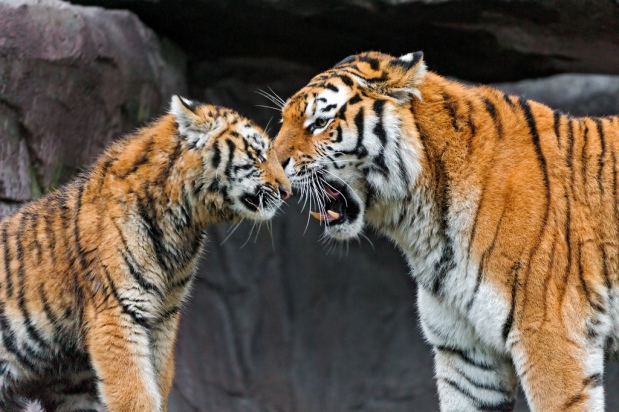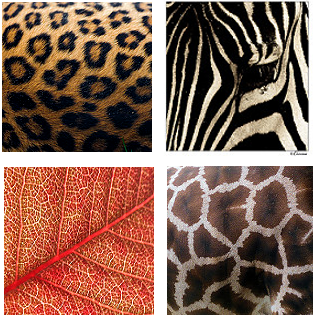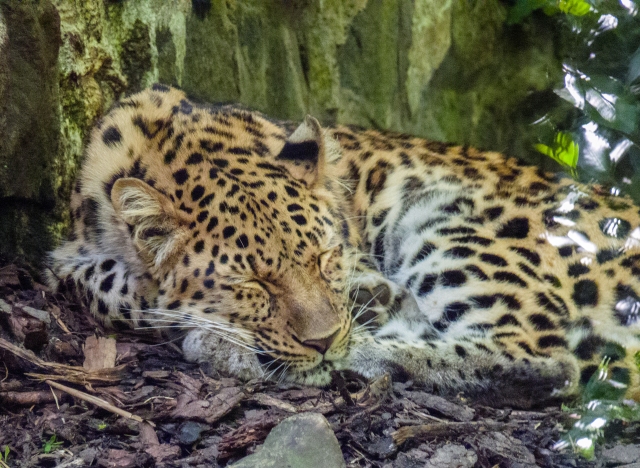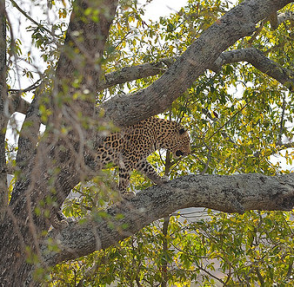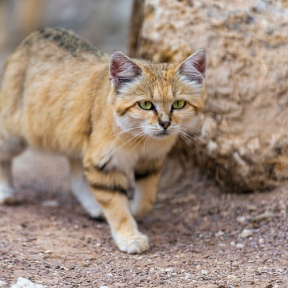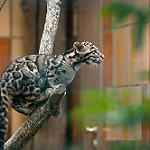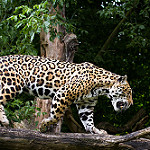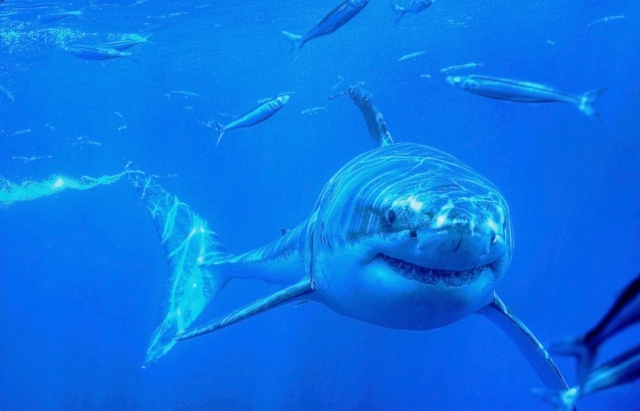
Sight, smell, hearing, touch and taste. Sharks share all of these senses with us but have also evolved a sixth and seventh sense to meet the challenges of marine life . And no this is not what I mean.

The word shark can conjure up many images; from jaws with rows of razor sharp teeth to a triangular fin cutting through the ocean. Despite this, one of the most defining characteristics of sharks (and rays) is the presence of a sixth and seventh sense. These senses may be responsible for the success these animals have had in colonizing the oceans and for their persistence for an estimated 450 million years.
The sixth sense
All living animals produce their own electrical field due to muscle contractions. Sharks can use changes in electrical fields and the associated electrical pulses to locate prey and even mates. This is particularly valuable when visibility is poor, for example in the deep sea. Sharks can even use this invaluable sixth sense to navigate the oceans during migration by tracing the earth’s electromagnet field.
A fish swimming (or anything for that matter) in the ocean will cause minor disruptions in the surrounding electrical field. These disturbances can be detected by sharks and rays by electroreceptors, specialized pores on the skin around their head and on the underside of their snout. These are called Ampullae of Lorenzini. A single shark can have thousands of these on their snout, with the hammerhead shark known to have over 3000. The unique shape of the hammerhead shark head is actually thought to be due to the presence of these electrosensors. The shape allows the sharks to have more of them and as a consequence it increases their success in finding prey.
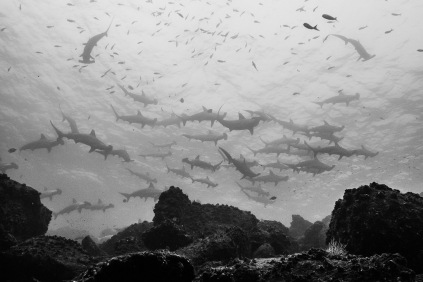
The Ampullae of Lorenzini are tiny jelly-filled pores. When something causes a disruption in an electrical field, this information will be received by the them. The jelly-filled bulbs inside them vibrate when an electrical signal is detected and cilia at the bottom of the pore then transport this information to nerve cells, which in turn transmit it to the brain. The electrical pulses can not only convey the location of a prey source, but can be used to infer whether a fish is in distress. A fish swimming erratically will produce tell-tale electrical pulses which allow sharks and rays to target already distressed fish.
The seventh sense
This sense is known as the lateral line. It detects pressure changes and vibrations similarly to how human skin detects changes in wind direction. This sense gives sharks, as well as all other fish, spatial awareness by detecting small changes to ocean currents. It is extremely important in predatory behaviour, orientation and social schooling (shoals swimming together in coordination).
The lateral line sensory system is made up of modified scale and hair cells which form a series of pores. The pores fuse to form a canal underneath the skin (see diagram below) . Cupula are located in between the pores, and they respond to changes in the movement of water by bending sensory hair cells beneath them. Bundles of these hair cells are called the neuromast, and this is responsible for sending nerve impulses to the brain. These nerve impulses allow the fish to process the information and respond accordingly.
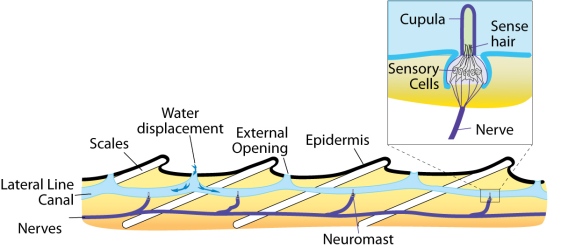
Changes in the movement of ocean currents cause the neuromast to be moved around. Differences in the normal movement of the neuromast informs the fish of any structural changes in their environment as well as the proximity of other nearby animals.
Due to the similarity between the lateral line system and the Ampullae of Lorenzini, it is likely that the latter developed through modification of the former.
Both the lateral line system and the Ampullae of Lorenzini are extremely sensitive, and when touched can induce a temporary trance-like state in a shark, as you can see in the video below. Would this would be the perfect escape from a dangerous encounter with a shark?
Thanks for reading!

Photo credit great white shark: <a href=”http://www.flickr.com/photos/57915000@N02/6783249270″>Great White Shark</a> via <a href=”http://photopin.com”>photopin</a> <a href=”https://creativecommons.org/licenses/by-nc/2.0/”>(license)</a>
Gif credit: http://giphy.com/gifs/horror-movie-bruce-willis-DvtsYOKrqPZg4
Photo credit hammerhead sharks: <a href=”http://www.flickr.com/photos/99024595@N00/21717747416″></a> via <a href=”http://photopin.com”>photopin</a> <a href=”https://creativecommons.org/licenses/by-nc-nd/2.0/”>(license)</a>
Attribution for lateral line system diagram: By Thomas.haslwanter (Own work) [CC BY-SA 3.0 (http://creativecommons.org/licenses/by-sa/3.0)%5D, via Wikimedia Commons






